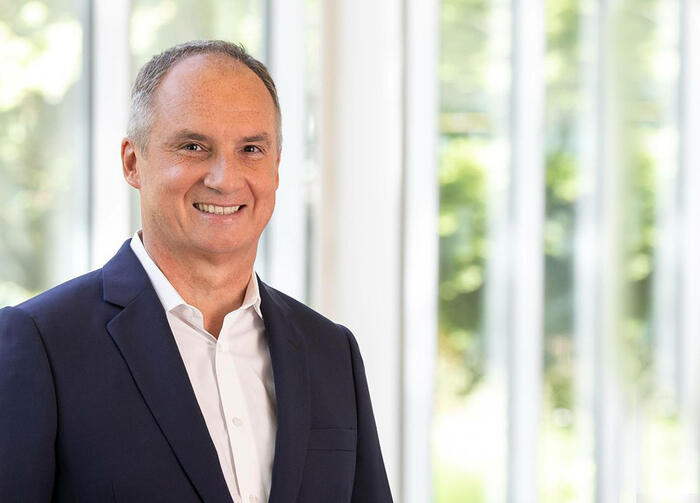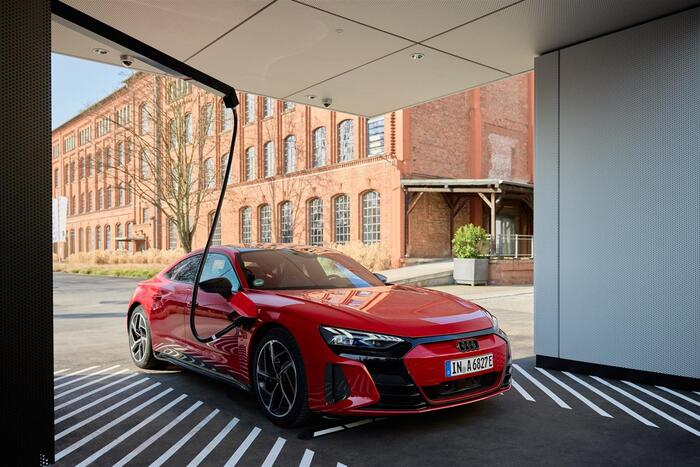Electric cars: Second Life - new life for used batteries
Created: 09/29/2022, 06:30
By: Marcus Efler
The most expensive part of an electric car is its battery pack.
But what happens to it when it is exchanged?
There are now a multitude of intelligent solutions.
The battery is the heaviest and most expensive component of an electric car - and is considered the most problematic: raw material extraction and disposal are controversial.
Effective reuse of used batteries thus solves two problems in one fell swoop.
In fact, there are now various uses around the world for energy storage devices whose capacity has fallen below 70 percent and are no longer suitable for use in cars.
Electric cars: Second Life - new life for used batteries
Sometimes they live on as important emergency power storage devices, sometimes they secure data centers or light up football stadiums.
Audi, for example, uses them for its own charging stations, the charging hubs.
The VW subsidiary is also working with an Indian start-up.
The government wants the three-wheeled tuktuks that rattle through metropolises such as Mumbai, Delhi and Chennai to gradually become electric – in some cases using discarded car batteries.
Efficient recycling: BMW and Brilliance plant in China.
©BMW
“The old batteries are still extremely powerful,” says Prodip Chatterjee, co-founder of the Indian partner Nunam, “if used in the right applications, they can have a major impact and help people in challenging life situations to generate income and economic independence – in a sustainable way.” The three-wheelers that are already electrically powered are mostly powered by lead-acid batteries, which have a short lifespan.
Electric cars: Used batteries replace public electricity
Jaguar Land Rover, the British brand of the Indian Tata group, together with the Italian energy company Pramac, have developed an energy storage device for stationary power supply.
In a first step, the mobile storage system ESS (Off Grid Energy Storage System) uses lithium-ion cells from previous prototypes and pre-series models of the Jaguar I-Pace.
This is intended to supply energy where access to the public power grid is limited or not available at all.
Cupra UrbanRebel: electric car in Ibiza format
View photo gallery
The ESS currently has a capacity of up to 125 kWh – more than enough to charge an electric car or power a family home for a week.
Pramac uses up to 85 per cent of the vehicle's battery supplied by Jaguar Land Rover directly in the storage unit, including the modules and wiring.
The remaining materials are fed back into the supply chain.
In the future, an ESS will also be used in the Jaguar Land Rover Experience Center in Johannesburg, South Africa, to support the fluctuating power supply from the public grid.
also read
Red round sticker on the car: That can get really expensive
Electric car: This is how much electricity and range cost radio, heating and light
Electric cars: Recycling used batteries is becoming more and more effective
But saving the valuable raw materials is also an option.
In Salzgitter, for example, VW has opened its first facility for recycling high-voltage batteries.
The aim is the industrialized recovery of raw materials such as lithium, nickel, manganese and cobalt in a closed cycle, as well as aluminium, copper and plastic with a recycling rate of more than 90 percent - but only those power storage devices that can no longer be used for other purposes .
Larger quantities of battery returns are not expected until the end of the 2020s at the earliest.
In a first step, the Salzgitter plant is designed to recycle up to 3,600 battery systems per year - that corresponds to around 1,500 tons of material.
Later, the system can be scaled to larger quantities with optimized processes.
Don't miss anything: You can find everything to do with cars in the regular car newsletter from our partner tz.de.
The Chinese joint venture BMW Brilliance Automotive (BBA) has also established a closed cycle for recycling the raw materials nickel, lithium and cobalt from high-voltage batteries.
The batteries come from fully and partially electric development vehicles, test systems, production rejects and, in the future, also from end-of-life vehicles.
BBA works with a local recycling company that disassembles discarded batteries.
The raw materials nickel, lithium and cobalt from the battery cells are then used to produce new battery cells for the BMW Group.
Recycling couldn't be more effective.
(Patrick Solberg/press-inform)







